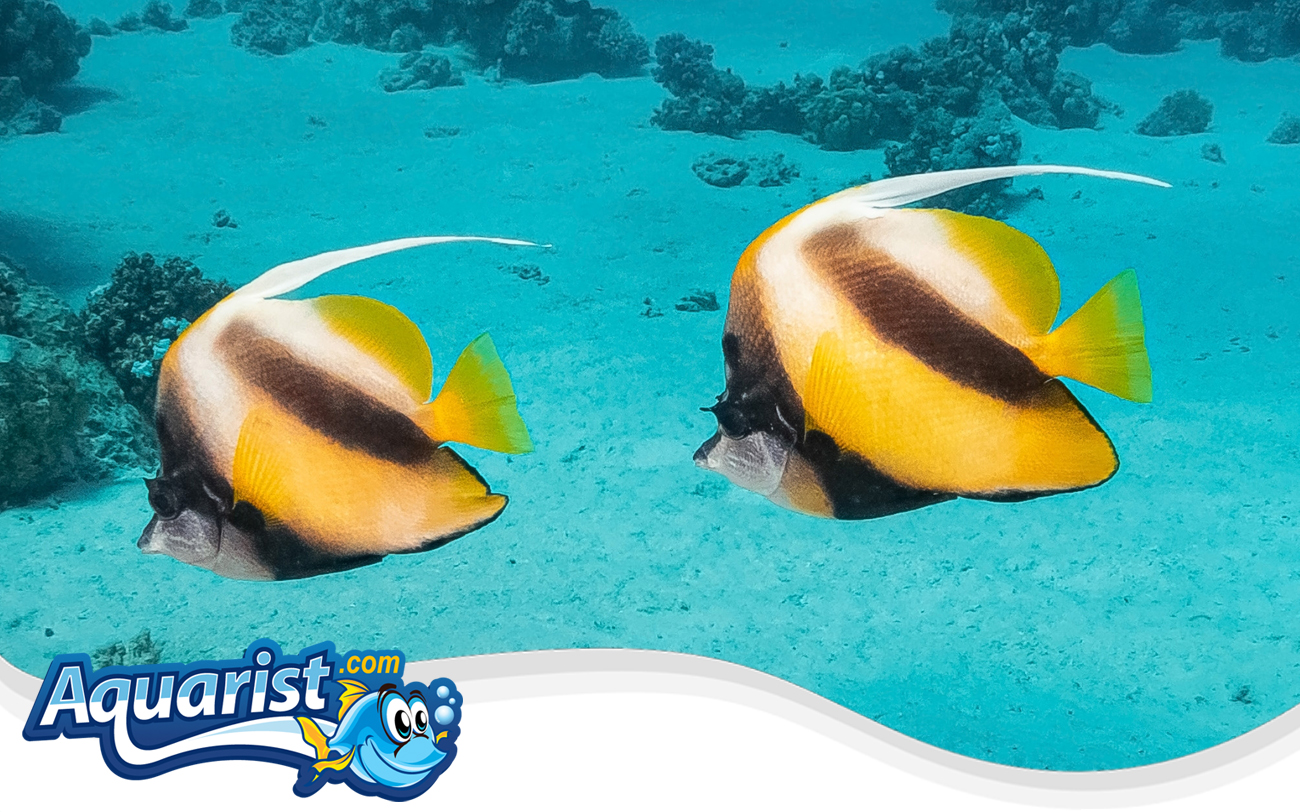Overview
- Endemic to the Red Sea and the western Indian Ocean, preferring coral-rich reef environments.
- Recognized by its bold black-and-white stripes with a golden-yellow rear body and an elongated dorsal fin.
- Often mistaken for the similar Heniochus acuminatus but can be distinguished by subtle coloration differences.
- Found in pairs or small groups, frequently seen hovering near reef drop-offs and steep slopes.
- A hardy, adaptable species that adjusts well to aquarium life in well-maintained marine tanks.
Feeding
- Omnivorous, feeding on zooplankton, small crustaceans, and coral polyps in the wild.
- Accepts a variety of prepared aquarium foods, including high-quality flakes, pellets, and frozen shrimp.
- Supplementing with algae-based foods, spirulina, and marine vegetation enhances health and coloration.
- Thrives on a diet of multiple small feedings per day to maintain energy levels.
- Frequently seen grazing on live rock and aquarium surfaces in search of microfauna.
Habitat
- Inhabits coral reef slopes, outer reef zones, and rocky ledges with moderate to strong currents.
- Prefers an aquarium setup with plenty of swimming space and rock formations for shelter.
- Requires stable water conditions and high-quality filtration to maintain optimal health.
- A minimum tank size of 125 gallons is recommended due to its active swimming nature.
- While mostly reef-safe, it may occasionally nip at soft corals or small invertebrates.
Fish Care
- Optimal water temperature: 74-80°F (23-27°C).
- Ideal pH range: 8.1-8.4, with a specific gravity of 1.023-1.026.
- Hardy but requires a stable environment with minimal fluctuations in water parameters.
- Best kept in a peaceful community setup to prevent stress from aggressive tank mates.
- Frequent water changes and a varied diet are crucial for maintaining long-term health.
Compatibility
- Generally peaceful and does well in community aquariums with non-aggressive species.
- Best kept in pairs or small groups, as it exhibits natural schooling behavior.
- Compatible with tangs, gobies, wrasses, and other similarly sized reef-safe fish.
- May pick at certain coral types, so caution is advised in mixed reef setups.
- Should not be housed with aggressive fish that could stress or outcompete it for food.
Aquarium Behavior
- Highly active swimmer, often exploring all areas of the tank.
- Forms strong bonds with tank mates and displays natural schooling tendencies.
- Frequently picks at rock surfaces and substrate in search of food.
- Can be shy initially but quickly adapts to its surroundings and becomes more confident.
- Thrives in a well-maintained aquarium with ample space, high water quality, and a varied diet.


